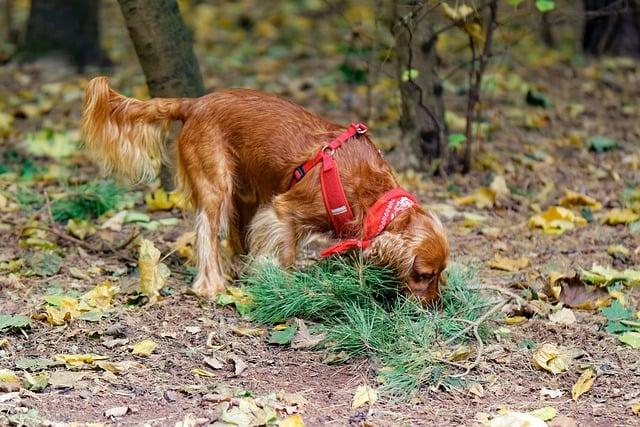When Max, a spirited golden retriever, chewed through yet another toy, his owner Sarah grew concerned. She wanted something safe and durable. After researching, she discovered rubber chew toys, specifically those made from natural, non-toxic materials. These toys not only withstand Max’s powerful jaws but also promote dental health and keep him entertained for hours. Sarah made the switch, and now Max happily chews away, free from the risk of harmful chemicals. Choose a safe chew toy for your dog—because their health is worth it!
Contents
- Understanding the Importance of Choosing Safe Chew Toys for Your Dog
- Key Materials to Look for in Dog Chew Toys
- Top Recommended Safe Chew Toys for Different Dog Breeds
- Tips for Maintaining and Inspecting Your Dogs Chew Toys for Safety
- Q&A
Understanding the Importance of Choosing Safe Chew Toys for Your Dog
When it comes to our furry companions, ensuring their safety is paramount, especially when it involves their playtime activities. Selecting the right chew toy can significantly impact your dog’s health and happiness. **Unsafe chew toys** can lead to serious injuries, such as choking, intestinal blockages, or dental damage. By understanding the materials and design of chew toys, you can make informed choices that prioritize your dog’s well-being.
One of the key factors to consider is the **material** used in the chew toy. Opt for toys made from durable, non-toxic materials that can withstand vigorous chewing. Look for options that are specifically labeled as **BPA-free** and **phthalate-free**. Rubber and nylon are often recommended for their resilience and safety. Avoid toys with small parts that can easily break off, as these pose a choking hazard. Always check for any signs of wear and tear, as damaged toys can become dangerous.
Additionally, consider your dog’s size and chewing habits when selecting a chew toy. A toy that is too small can easily be swallowed, while one that is too large may not be enjoyable for your pet. **Interactive toys** that engage your dog mentally and physically can also be beneficial. These toys not only satisfy their natural chewing instincts but also provide stimulation, reducing the likelihood of destructive behavior caused by boredom.
Lastly, always supervise your dog during playtime, especially with new toys. This allows you to monitor how they interact with the toy and ensures their safety. Regularly inspect the chew toys for any signs of damage and replace them as needed. By taking these precautions and choosing wisely, you can provide your dog with safe, enjoyable chew toys that contribute to their overall health and happiness.
Key Materials to Look for in Dog Chew Toys
When selecting chew toys for your furry friend, the materials used in their construction play a crucial role in ensuring safety and durability. **Natural rubber** is a popular choice, as it is not only tough and resilient but also non-toxic. This material can withstand aggressive chewing while providing a satisfying texture for dogs. Additionally, natural rubber is often infused with flavors, making it even more enticing for your pet.
Another excellent option is **nylon**, which is known for its strength and longevity. Nylon chew toys are designed to resist wear and tear, making them ideal for heavy chewers. Look for toys that are specifically labeled as safe for dogs, as some nylon products can splinter and pose a choking hazard. Opting for high-quality, dog-specific nylon toys ensures that your pup can enjoy their chewing experience without compromising safety.
**Natural fibers** such as hemp or cotton are also worth considering. These materials are biodegradable and free from harmful chemicals, making them an eco-friendly choice. Chew toys made from natural fibers can help promote dental health by reducing plaque and tartar buildup as your dog gnaws on them. Just ensure that the fibers are tightly woven to prevent any risk of ingestion.
Lastly, **food-grade silicone** is gaining popularity in the realm of dog chew toys. This material is soft yet durable, providing a gentle chewing experience that is safe for your dog’s teeth and gums. Food-grade silicone is also easy to clean and can be used for interactive play, such as stuffing with treats or peanut butter. When choosing silicone toys, look for those that are BPA-free and specifically designed for canine use to ensure your dog’s safety.
Top Recommended Safe Chew Toys for Different Dog Breeds
When it comes to choosing chew toys for your furry friend, it’s essential to consider their breed and chewing habits. Different dogs have varying levels of chewing strength and preferences, making it crucial to select toys that cater to their specific needs. For instance, **bulldogs** and **boxers** often require durable toys that can withstand their powerful jaws. Look for heavy-duty rubber toys that can endure aggressive chewing while providing hours of entertainment.
For smaller breeds like **Chihuahuas** and **Pomeranians**, opt for softer, lightweight options that are easy for them to handle. **Natural rubber** or **nylon** toys designed specifically for small dogs can be a great choice, as they are gentle on their teeth yet still satisfy their urge to chew. Additionally, consider toys that incorporate squeakers or crinkle sounds to keep them engaged and stimulated.
Active breeds such as **Labradors** and **German Shepherds** thrive on interactive toys that challenge their minds and bodies. Look for **treat-dispensing** toys that encourage problem-solving while rewarding them with a tasty surprise. These toys not only promote healthy chewing habits but also help to alleviate boredom and prevent destructive behavior.
Lastly, for senior dogs or those with dental issues, consider softer, more flexible chew toys that are easier on their teeth and gums. **Edible chews** made from natural ingredients can also be a fantastic option, providing both a satisfying chew and nutritional benefits. Always ensure that any chew toy you choose is free from harmful chemicals and is appropriately sized for your dog to prevent choking hazards.
Tips for Maintaining and Inspecting Your Dogs Chew Toys for Safety
Ensuring the safety of your dog’s chew toys is crucial for their health and well-being. Regular inspection is key to identifying any signs of wear and tear that could pose a risk. **Check for cracks, frayed edges, or loose parts** that could be ingested. If you notice any damage, it’s best to replace the toy immediately to prevent potential choking hazards or internal injuries.
Cleaning your dog’s chew toys should be part of your routine maintenance. **Use mild soap and warm water** to wash toys that are not made of fabric or have electronic components. For rubber or plastic toys, consider using a mixture of vinegar and water for a natural disinfectant. Make sure to rinse thoroughly and allow them to dry completely before giving them back to your furry friend. This practice not only keeps the toys hygienic but also prolongs their lifespan.
Choosing the right material is essential for your dog’s safety. Opt for chew toys made from **durable, non-toxic materials** such as natural rubber or high-quality nylon. Avoid toys with small parts that can break off, as these can easily become choking hazards. Additionally, consider your dog’s chewing style; aggressive chewers may require tougher toys designed specifically for their needs, while gentler chewers can enjoy softer options.
Lastly, always supervise your dog during playtime, especially with new toys. **Observe how they interact** with their chew toys to ensure they are using them safely. If your dog tends to destroy toys quickly, it may be a sign that they need a more robust option. By staying vigilant and proactive, you can create a safe and enjoyable play environment for your beloved pet.
Q&A
-
What materials should I look for in a safe chew toy?
When selecting a chew toy for your dog, prioritize toys made from durable, non-toxic materials such as rubber, nylon, or natural fibers. Avoid toys with harmful chemicals or small parts that could pose a choking hazard.
-
Are there specific brands known for safe chew toys?
Yes, several reputable brands specialize in safe chew toys. Look for brands like KONG, Nylabone, and West Paw, which are known for their commitment to quality and safety in pet products.
-
How can I determine if a chew toy is appropriate for my dog’s size?
Choose a chew toy that is size-appropriate for your dog. A toy that is too small can be a choking hazard, while one that is too large may be difficult for your dog to handle. Always refer to the manufacturer’s size recommendations.
-
How often should I replace my dog’s chew toys?
Regularly inspect your dog’s chew toys for signs of wear and tear. Replace them immediately if they become damaged or if pieces start to break off. A good rule of thumb is to replace chew toys every few months or sooner if needed.
choosing the right chew toy is crucial for your dog’s safety and well-being. Prioritize durable, non-toxic materials that suit your dog’s size and chewing habits. Invest in quality toys to ensure your furry friend enjoys safe, healthy playtime.

大家好,我是彼得潘,專業的手法身體治療師。我喜歡探索和研究各種主題,並透過與人工智慧的合作分享專業、實用、有趣的文章。我們定期進行人工審核,以確保內容的準確性。如果您發現文章中有任何不準確的地方,請隨時與我們聯繫,我們會及時糾正。您可以透過 [email protected] 與我們聯繫。



